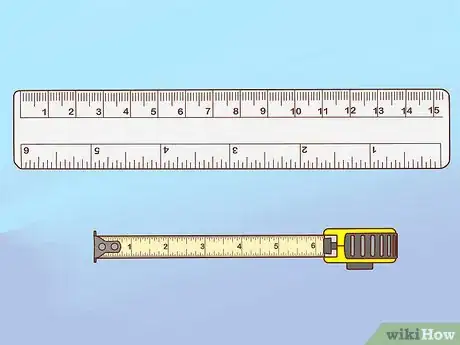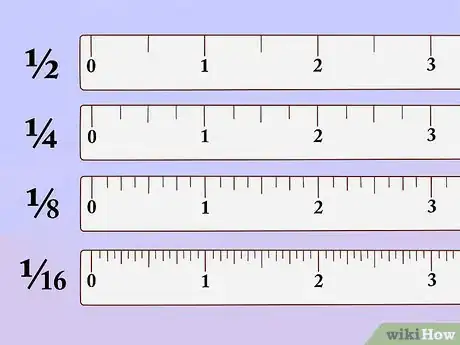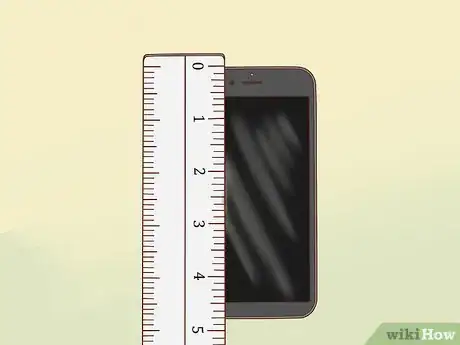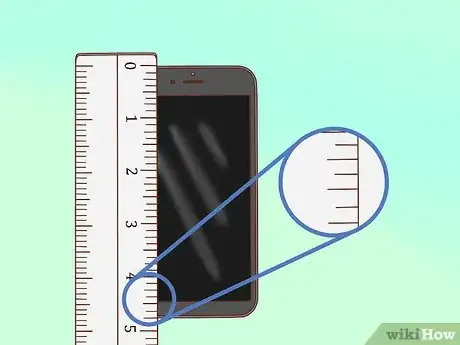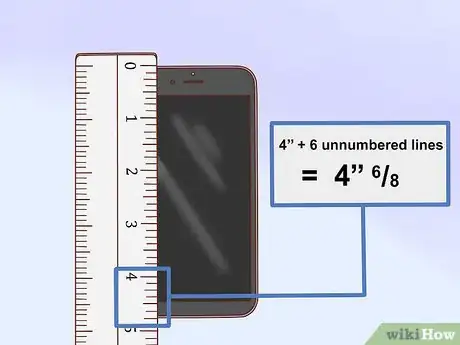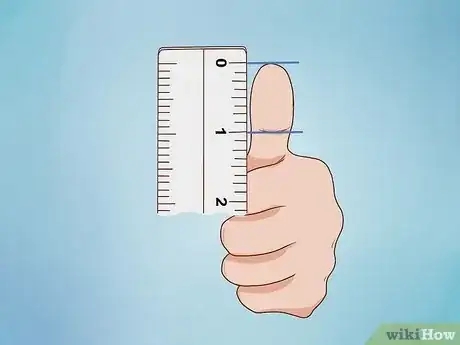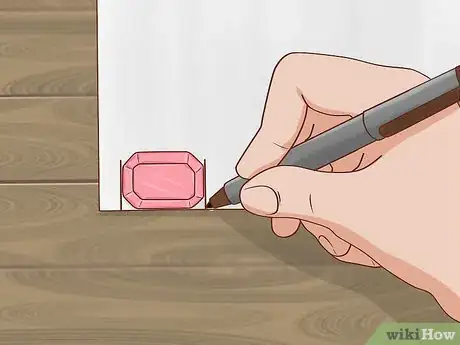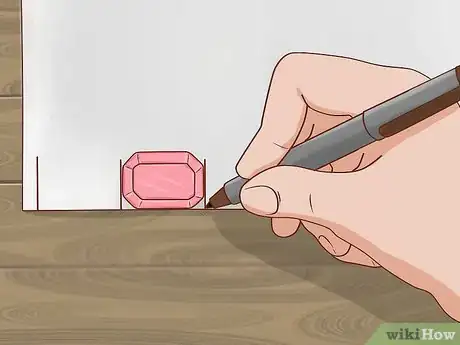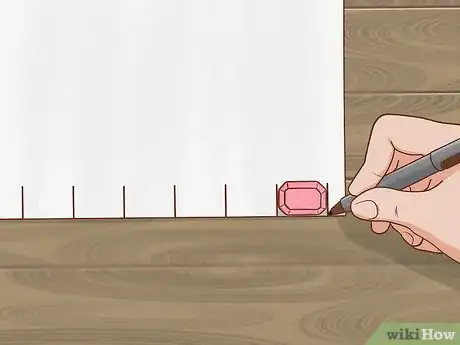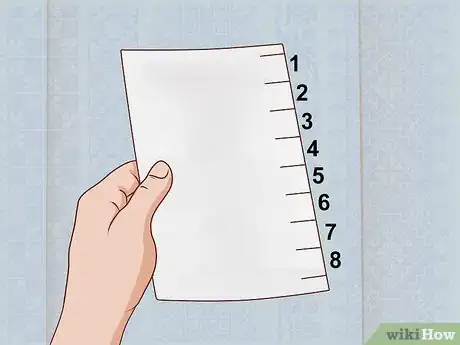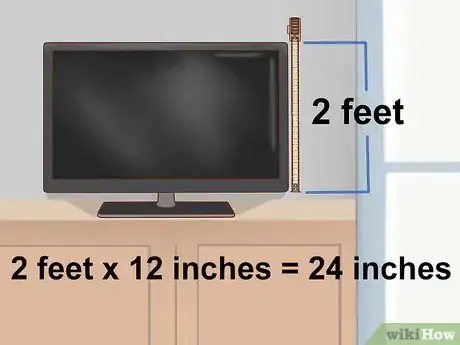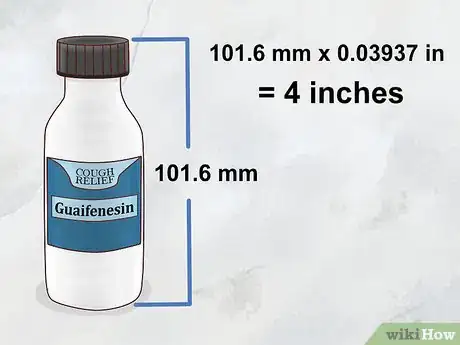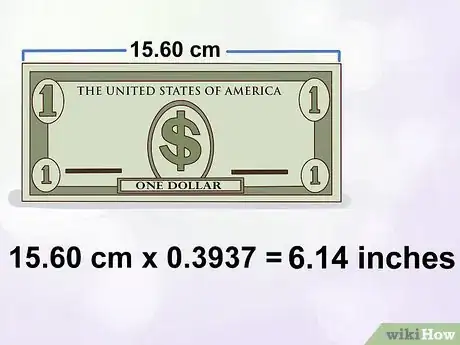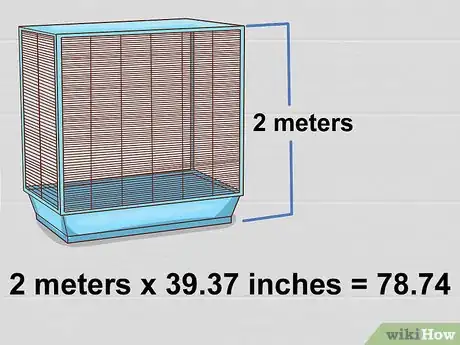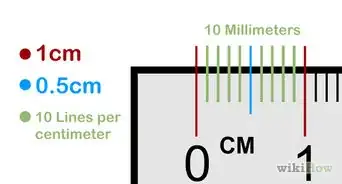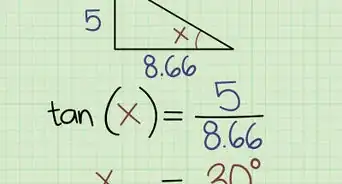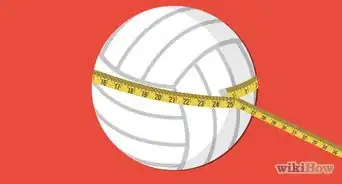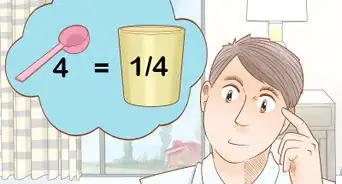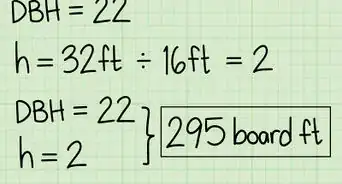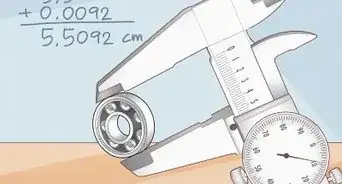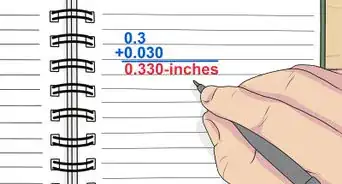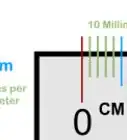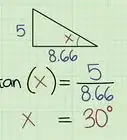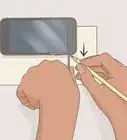This article was co-authored by wikiHow Staff. Our trained team of editors and researchers validate articles for accuracy and comprehensiveness. wikiHow's Content Management Team carefully monitors the work from our editorial staff to ensure that each article is backed by trusted research and meets our high quality standards.
There are 16 references cited in this article, which can be found at the bottom of the page.
This article has been viewed 229,086 times.
Learn more...
The inch is a standard unit of length in the imperial measurement system. If you’re trying to measure inches, the best way to do so is to use a tool specifically designed to measure inches. Fortunately, even if you don’t have this type of tool, there are a few other ways you can use estimates or conversions to measure something in inches.
Things You Should Know
- Use a ruler, yardstick, or measuring tape for an exact measurement. If you're measuring something with a rounded edge, use a cloth measuring tape.
- Place the starting end of the measuring tool where it says “0” against the closest edge of the object or distance you’re measuring.
- Extend the measuring tool along the item or distance you're measuring. Note the last full inch that lines up with the end point of the item/distance.
- Count any unnumbered lines past the full inch value. Add the fraction to the full inch value to get your final measurement.
Steps
Using a Measuring Tool
-
1Be sure to choose a measuring tool that measures in inches. This usually includes rulers, yardsticks, or measuring tape. The size of whatever you’re measuring will determine which measuring tool is best for you.[1]
- For example, use a measuring stick if you’re trying to measure the length of something with a rigid straight edge. Rulers are best for short distances, while yard sticks are better for objects that are 1 to 3 feet (0.30 to 0.91 m) long.
- Use a tape measure when you need to measure the distance around a curved object. Tape measures can bend, making them better for objects that are not perfectly flat or straight.
-
2Note how your measuring tool divides inches into fractions. Count the number of small lines in between the bigger, numbered lines on your measuring tool. Since each of the numbered lines represents an inch, the number of lines in between them determines how your tool breaks inches down into fractions.[2]
- If there is 1 unnumbered line, the inches are broken down into halves.
- If there are 3 unnumbered lines, the inches are broken down into quarters.
- If there are 7 unnumbered lines, the inches are broken down into eighths.
- If there are 15 unnumbered lines, the inches are broken down into sixteenths.
Advertisement -
3Line up the start of your tool with 1 end of whatever you’re measuring. Place the starting end of the measuring tool where it says “0” against the closest edge of the object or distance you’re trying to measure. Make sure the starting edge of the measuring tool and the edge of the object are perfectly aligned in order to get an accurate measurement.[3]
- If the starting edge of your tool is not marked with a “0,” you can also identify it by locating the number “1” on the tool. The end that comes just before the “1” mark on your measuring tool is the “0” end.
-
4Extend the measuring tool down the object you’re measuring. Bring the measuring tool out along the length of the object as far as it can go. Keep the tool parallel to this length the entire way in order to ensure your measurement is accurate.[4]
- When using a measuring stick, the stick should lie flat against the edge or line being measured.
- When using measuring tape, the tape should wrap around the entire distance being measured.
-
5Identify the last full inch your tool is measuring on the object. This is the last numbered value represented on the measuring tool before it reaches the opposite end of the line, edge, or distance being measured. This numbered value is the number of whole inches in the length that you’re measuring.[5]
- The numbered values on a ruler, yardstick, or measuring tape all correspond to whole inches. The shorter, unnumbered lines in between the numbered values are fractions of an inch.
-
6Count the unnumbered lines past the previous full inch value. Identify the unnumbered line on the measuring tool that lands at the exact end of the distance being measured. Then, count the unnumbered lines in between the measured whole inch value and that final line, including the final line itself.[6]
-
7Add the fractions you just counted to the full inch value. This will give you the final measurement in inches of whatever you’re trying to measure. Be sure you’ve already determined how your measuring tool has divided inches into fractions before doing this.[7]
- For example, if the object you’re measuring stops on the fifth of 7 unnumbered lines after the “3” mark, then the length of the object is 3 inches plus 5/8 of an inch.
- If the end of the edge lands on a numbered line, there is no additional fraction to add on.
Estimating Inches
-
1Find an object about 1 inch long you can use to make your estimates. The most common object used to estimate inches is the adult thumb, which is about 1 inch wide. Other options may include a water bottle cap, a detachable pencil eraser, the width of a standard rubber eraser, the length of a paperclip, and the length of a standard small sewing pin.[8]
- The distance between the top knuckle of the thumb to the tip of the thumb on an adult's hand is also about 1 inch long.
-
2Trace the length of whatever you’re measuring on a sheet of paper. Place the edge you want to measure on a blank sheet of white paper. Use a pencil to trace the length of the edge from 1 end to the other.[9]
- The line you trace onto the paper should be the exact same length as the edge you want to measure. After tracing the edge, you can remove it from the paper.
- Make sure that you use white or light colored paper so that you can clearly see the marks you make.
Tip: If the object you want to measure is longer than a piece of paper, you can also reverse this step by tracing the length of your inch-long object onto a piece of paper. Then, you can use that tracing to roughly measure the length of the object.
-
3Place the inch-long object at the start of the tracing and mark where it ends. Align 1 end of the object you’re using to estimate inches with the starting point of the line you traced. Mark the place on the line where the other end of the measuring object stops with a pencil.[10]
- For example, if you’re using your thumb, lay your thumb horizontally on top of the line, with the bottom end of your thumb aligned with the starting point of the line. Then, use a pencil to mark on the line immediately above your thumb.
-
4Move the object up so that it’s now aligned with the last mark you made. Shift the object along the line so that the starting point of the object is placed along the line that previously marked where the top of that object was. As before, make another mark along the line where the top of your object is now located.[11]
-
5Repeat this process until you’ve made marks along the entire line. Each time you shift the position of the measuring object, make sure that the measuring edge lies parallel to the line. If the space after the last line is significantly smaller than the rest, use your eye to judge how much shorter that line is and estimate what fraction of an inch it represents.[12]
- For instance, if the final space is about half as long as the others, count it as half an inch.
-
6Count up the number of spaces you’ve marked to make your estimate. After reaching the end of the line, remove the measuring object. Count the number of gaps in between your marks. This number is a rough estimate of the number of inches.[13]
- Count the spaces in between lines, not the lines themselves.
- Make sure that you count the space before the first line and the space after the last line, as well.
Converting Other Imperial Measurements to Inches
-
1Convert feet into inches by multiplying the number of feet by 12. There are 12 inches in every 1 foot. To convert a measurement taken in feet to its equivalent value in inches, you must multiply the value in feet by 12.[14]
- For example, if you have a measurement of 5 feet, multiply it by 12 to get a measurement of 60 inches.
-
2Calculate inches from yards by multiplying by 36. There are 36 inches in every 1 yard. If you have a measurement taken in yards and you need to know the equivalent number of inches, you would multiply the yard value by 36.[15]
- For example, if you have a measurement of 2 yards, multiple it by 36 to get a measurement of 72 inches.
Advertisement -
3Find the number of inches based on the number of miles. There are 63,360 inches in every mile. If you are given the length of a distance in miles and need to know how many inches are in that distance, multiply the number of miles by 63,360.[16]
- For example, if you’re given a distance of 0.5 miles, multiply this by 63,360 to get a measurement of 31680 inches.
Converting Metric Measurements to Inches
-
1Calculate inches from millimeters by multiplying by 0.03937. Every 1 millimeter is equivalent in value to 0.03937 inches. Multiply a length value taken in millimeters by a conversion factor of 0.03937 to convert that value into inches.[17]
- For example, if you have a measurement of 92 millimeters, multiply this by 0.03937 to get 3.62 inches.
-
2Convert centimeters into inches by multiplying by 0.3937. There are 0.3937 inches for every 1 centimeter. To find out how many inches there are when you know a distance measured in centimeters, multiply the centimeter value by a conversion factor of 0.3937.[18]
- For example, if you have a measurement of 34.18 centimeters, multiply it by 0.3937 to get a value of 13.46 inches.
-
3Determine the number of inches from the number of meters. Every meter is equivalent to 39.37 inches. If a length value has been measured in meters, you can convert it to inches by multiplying that value by a conversion factor of 39.37.[19]
- For example, if you have a distance of 7 meters, multiple 7 by 39.37 to find the measurement of that distance in inches. In this case, that distance would be 275.59 inches.
Community Q&A
-
QuestionWhere is .66 inches on a ruler?
 DonaganTop AnswererMost rulers are not calibrated in hundredths of an inch. .66" is 2/3 of an inch, which is a little more than halfway from the mark for a half-inch and the mark for 3/4 of an inch.
DonaganTop AnswererMost rulers are not calibrated in hundredths of an inch. .66" is 2/3 of an inch, which is a little more than halfway from the mark for a half-inch and the mark for 3/4 of an inch. -
QuestionWhat if we do not have a ruler?
 DonaganTop AnswererTo measure anything, you need a measuring device such as a ruler, yardstick, measuring tape, etc.
DonaganTop AnswererTo measure anything, you need a measuring device such as a ruler, yardstick, measuring tape, etc.
Things You'll Need
- Ruler, yardstick, or measuring tape
- Paper
- Pencil
- 1-inch measuring object (for estimates)
- Calculator
References
- ↑ https://www.ck12.org/measurement/tools-for-measurement-of-customary-and-metric-lengths/lesson/Appropriate-Measurement-Tools-MSM6/
- ↑ http://www.homeschoolmath.net/teaching/f/measuring_inches.php
- ↑ https://www.youtube.com/watch?v=_1r7WVh2Zgc#t=3m20s
- ↑ https://www.youtube.com/watch?v=mKarbrOme_Y#t=3m25s
- ↑ https://www.youtube.com/watch?v=mKarbrOme_Y#t=3m25s
- ↑ https://www.youtube.com/watch?v=mKarbrOme_Y#t=3m32s
- ↑ https://www.youtube.com/watch?v=_1r7WVh2Zgc#t=2m
- ↑ http://www.mathsisfun.com/measure/us-standard-length.html
- ↑ https://www.budgetdumpster.com/blog/measure-without-tape-measure/
- ↑ https://www.youtube.com/watch?v=J5kZtB0ljXk#t=1m10s
- ↑ https://www.youtube.com/watch?v=J5kZtB0ljXk#t=1m13s
- ↑ https://www.youtube.com/watch?v=J5kZtB0ljXk#t=1m34s
- ↑ https://www.youtube.com/watch?v=J5kZtB0ljXk#t=1m34s
- ↑ https://www.metric-conversions.org/length/feet-to-inches.htm
- ↑ https://www.metric-conversions.org/length/feet-to-inches.htm
- ↑ http://www.metric-conversions.org/length/miles-to-inches.htm
- ↑ https://www.metric-conversions.org/length/millimeters-to-inches.htm
- ↑ https://www.metric-conversions.org/length/centimeters-to-inches.htm
- ↑ http://www.metric-conversions.org/length/meters-to-inches.htm
About This Article
To measure in inches, start by lining up a ruler, yardstick, or tape measure with the object or distance you're trying to measure so the "0" is at one of the ends. Then, look for the last full inch before the opposite end of the object or distance you're measuring. A full inch will be marked by a long line with a number at the end. Once you've found that, count the unnumbered lines past it until you reach the very end of the object or distance. Remember that the unnumbered lines represent fractions. For example, if there are 7 short, unnumbered lines in between each full inch, each of those short lines represent 1/8 of an inch. Finish by adding the fractions you counted to the whole number from the last full inch. Before you measure, be sure to check that the tool you're using has inch markers, and not just centimeters or other metric units! To learn how to estimate inches using your thumb, scroll down!
